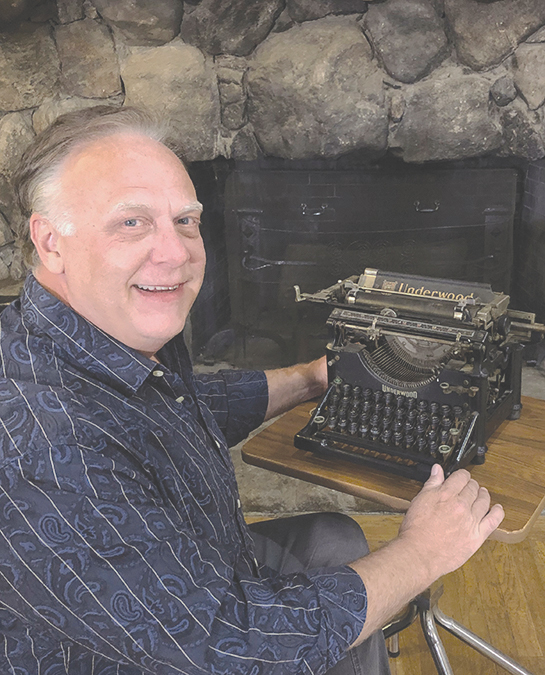The Mystery of the Sunland Olives
Today’s local history story begins on a pleasant day in 1932, more than 2,000 miles away in the Muskoka Lakes region of Ontario, Canada. Some children were playing in a large yard when a big, fancy car turned down the long driveway. They ran to greet the group of young adults that emerged from the shiny new car and were asked if they could lead them to the old Adams’ family homestead nearby.
After following a path through the woods, they arrived at a small, dilapidated log cabin. The guests talked and laughed as they explored the structure before returning to their car. Once there, the driver reached into his pocket and handed the children a $5 bill for leading the way, the equivalent of about $100 today. He then reached into the car and retrieved a half dozen jars and handed one to each of the children. Many thanks were expressed, and they were on their way.
The kids looked at the jars to see a colorful image of a large orchard backed by beautiful mountains. At the top of the label it read, Sunland Olives. None of these young ones had ever seen an olive before but one removed a top and popped one in their mouth. Just as quickly it was spit upon the ground. The taste was universally not appreciated it appears but one of their ubiquitous sling shots appeared – and an olive was loaded and slung. Every sling was then retrieved from each child’s back pocket and within a short while, all the olives were spent. All that was left was the mystery of these guests, their fancy car and the story behind these jars of olives. Many decades passed and the mystery of the Sunland Olives would occasionally come up in conversations among those who were there that day.
Finally, a call came to the local historical society from an Elizabeth Schell, who was reaching out to learn about her ancestry and what she could gather about her great-grandparents, Thomas and Esther Adams, who had been early settlers there in the late 1870s. She was able to provide all the answers to the long-standing mystery of Muskoka Lakes.
Thomas and Esther had emigrated to Canada from England when they had learned of free lands to be had in this beautiful region, about a hundred miles north of Toronto. Of the couples’ many children, several also emigrated. Their son Alfred felt the urge to travel west and arrived in Sunland, then called Monte Vista, in 1884. His young son, Alfred Jr. took to the land and worked for a time for two brothers, tending their large olive orchard. Still in his teens, Alfred Jr. turned his attention to the process of canning olives and began his operation at the northwest corner of Wentworth Street and Sherman Grove Avenue in the mid 1890s.
In 1898, Alfred Jr. was married to Netta Stancliff here in Sunland and all the town came out to celebrate. The business grew, and numerous buildings were constructed to facilitate the processing of olives. By the early 1920s the Adams’ canning factory was Sunland’s largest employer with 50 plus workers and 30,000 cans of olives being produced each year. Their product was shipped around the world, clearly marked as Sunland Olives.
Elizabeth Schell shared that some of Alfred Jr.’s children and their wives, who would have been in their 20s and 30s, traveled across the country in 1932 to visit their great-grandparents old homestead, and took with them an ample supply of Sunland Olives to give away along their journey.
By the early 1950s development in Sunland and other issues forced the business to move north. In the summer of 1955, the historic cannery was torn down to make way for a 34-home tract and another local landmark passed from the scene.

